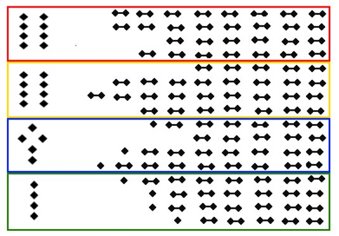Regardless of the chart being cast, the first step in Geomancy is the Casting of the Mothers.
The Mothers of the foundation of reading, the First Mother represents the querent and all the other figures of the chart are derived from them. It is in the creation of the mother that the intuitive mind first comes into play, because they are obtained through meditation and trance.
Forming the Mothers may be the first step, but the first step of the first step involves formulating your question upon which you will meditation.
Geomancy is a divinatory tool of directness which can cut through any form of uncertainty. Whereas Tarot will answer the question that “should” have been asked, Geomancy answers what was asked. Given this, questions should be direct and to the point. For example, questions like;
“Is this a good time to invest in this venture?”
Or
“Should I go for the new vacancy at work?”
are particularly well formulated for Geomancy.
It is also important to be able to relate the question to one of the 12 houses of astrology. Geomancy is the little sister of astrology, and there is a lot of cross over between the two practices. Being able to understand the question in relation to the house which rules it will help in the process of interpreting the results. In the two above examples, the first relates to fifth and eight houses whilst the second relates to the sixth and tenth.
Casting The Mothers
Once you have your question in mind the next step is to meditate upon it, open to input and influence. It is during this process that the act of casting, or sowing, the points occurs.
Now, the geomancer draws sixteen lines of points, from right to left. Traditionally this would be done on the ground in sand or dirt. The modern practitioner may want to consider a sand tray, chalk board or simply pen and paper.
Whatever the material used it is important that the geomancer doesn’t actively count the points made but should be mindful of how long the individual lines are. It is better to have more than sixteen short lines rather than twelve long ones.

On coming out of the meditative state sixteen lines are grouped in fours (any lines over and above sixteen can be disregarded) and then counted off two by two from right to left. The best way to do this to ensure there are no mistakes is to mark them off in connected pairs with the lines ending in either a single or paired dot. From this the points of the geomantic figures, known as the Mothers, are established and put within the first four houses of the shield chart from right to left.
Other ways to generate the figures using odd or even results include
- Flipping of coins using heads or tails
- Casting lots (such as shells or wooden sticks)
- Casting dice, either a singular die or a group of four
From here the Daughters, Nieces, Witnesses and Judge are derived, so that will be what we discuss next.






















